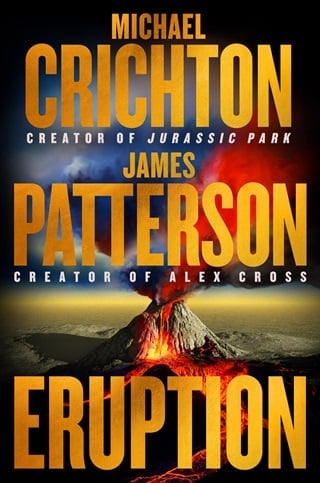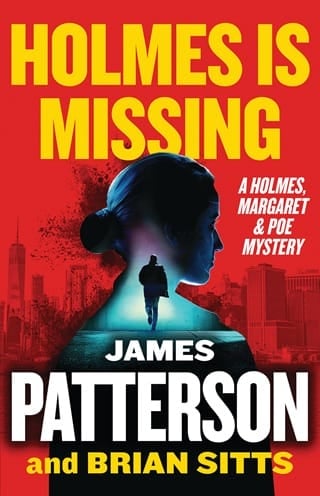Chapter 6
The press conference was winding down.
MacGregor had felt more relaxed the longer it had gone, knowing he was giving them more information than they needed. He explained now that the Hawaiian Islands were on a hot spot built by a mantle plume—a hole in the ocean floor, through which magma flowed intermittently. The magma cooled as it rose, making a dome of lava that slowly grew until it broke the surface of the ocean as an island. As each island was built up, the shifting of the Pacific Plate moved it north and west, leaving behind the hot spot, where a new island began forming.
This hot spot had produced a chain of islands stretching halfway across the Pacific Ocean. The Hawaiian Islands were merely the end of the chain. Once their volcanism stopped, the islands slowly eroded away, shrinking in size. Of the Hawaiian Islands, Ni‘ihau and Kaua‘i were the oldest and smallest, then O‘ahu, Maui, and Hawai‘i.
John MacGregor was in his personal comfort zone now. The people in front of him might not feel back on firm footing after the quakes. But he was.
"In geological terms," MacGregor said, "the island of Hawai‘i is brand-new. It's one of the few landmasses on our planet that is younger than mankind itself. Three million years ago, when small apes began to stand upright on the African plains, the island of Hawai‘i did not exist. It was not until a million years ago, when Homo habilis, the descendants of the early ape-men, were living in crude shelters and starting to use stone tools, that the Hawaiian seas began to boil, revealing the presence of undersea volcanoes. Since that time, five different volcanoes have poured out enough lava to create an island above the surface of the ocean."
He paused, looking out at the audience. A lot of this was dense, he knew, but he still had their attention, although probably not for much longer.
He continued. "The eruptive pattern of the five volcanoes on the island of Hawai‘i is the same pattern as the entire island chain." Of the five volcanoes, the one farthest north, Kohala, was extinct and badly eroded. It hadn't erupted for 460,000 years. Next northward was Mauna Kea, which hadn't erupted for 4,500 years. Third was Hualālai, which hadn't erupted in over 200 years, not since Jefferson was president. (Mac didn't bother telling them that Hualālai was the fourth-most-dangerous volcano in America. The tourists at Kona didn't need to hear that.) And then the two active volcanoes, Mauna Loa and Kīlauea.
And finally, he explained, in the ocean thirty miles to the south, the volcano Kama‘ehuakanaloa, formerly Lō‘ihi, was building a new island less than a mile underwater.
He grinned. "The midterm exam will be at the end of the week," he said. He glanced at his watch. "Anything else?"
He wanted to get out of here, but he had been taught not to leave if there were any hands still in the air.
"What are the chances this eruption will be violent?" another reporter he didn't recognize, an older man, asked.
"Very small. The last explosive eruption was in prehistoric times."
"What's the risk of avalanches to Hilo?"
"None."
"Hasn't lava reached Hilo in the past?"
"Yes, but thousands of years ago. The city of Hilo is actually built on old lava deposits."
"If lava flows toward Hilo, what can be done to stop it?" the older reporter asked, staying with Mac.
"We don't think it will flow that way. We think it will flow north toward Mauna Kea."
"Yes, I get that. But can flowing lava be stopped?"
MacGregor hesitated. He wanted to get the hell off the stage without alarming them, but it was a fair question, one that deserved an honest answer.
"No one has ever succeeded in stopping it," he said. "In the past, people on Hawai‘i have tried bombing to divert the flows, bulldozing dikes to divert the flows, and spraying seawater on the lava to cool it and divert the flows. None of those tactics worked."
He glanced at Jenny, who came forward, nearly running, and said, "Are there any specific questions about this coming eruption?" She scanned the audience. "No? Then our thanks to Dr. MacGregor and thank you very much for being here. Any other questions, don't hesitate to call. Our numbers are on the press release."
She held up a hand as the reporters began to stir. "Now, I have a few announcements for the TV people. Once the eruption begins, you'll want B-roll and flyovers. Let me explain how it's going to work. If the eruption is large, flyovers will be forbidden because volcanic ash shuts down airplane engines. However, we'll send up three helicopter flights a day, and that tape will be provided to you. Filming from the ground is allowed during the eruption as long as you do it from designated safe points. If you want to film from another area, we'll send a geologist out with you. Don't go by yourself. And don't assume you can go to the same place you went yesterday because conditions change hourly. Please take these rules seriously, because in every past eruption we've had newspeople killed and we'd like to avoid that this time."
MacGregor watched as the reporters and camerapeople came forward to the edge of the stage and clustered in front of Jenny. He managed to slip quietly away.
He pulled off his tie as he went.
 Fullepub
Fullepub 



